For decades, the name Freddy Krueger has conjured images of razor-sharp gloves and a chillingly disfigured face, invading the dreams of countless moviegoers and solidifying its place in the pantheon of horror icons. The Nightmare on Elm Street franchise is more than just a series of films; it’s a cultural phenomenon that has shaped the horror genre and continues to terrify and fascinate audiences today. To truly understand the depth and breadth of this phenomenon, one must delve into The Elm Street Legacy, a journey meticulously chronicled in the definitive documentary, Never Sleep Again: The Elm Street Legacy. This isn’t just a behind-the-scenes glimpse; it’s an exhaustive, four-hour exploration that leaves no dream stone unturned, making it an absolute must-watch for any horror aficionado.
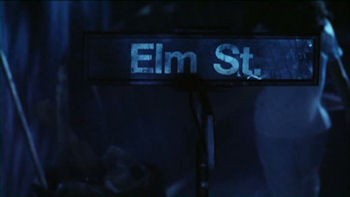 Robert Englund as Freddy Krueger, with the quote from Wes Craven about the legacy of Nightmare on Elm Street
Robert Englund as Freddy Krueger, with the quote from Wes Craven about the legacy of Nightmare on Elm Street
What is ‘Never Sleep Again: The Elm Street Legacy’?
Never Sleep Again: The Elm Street Legacy is not your typical movie documentary. Clocking in at a glorious four hours, excluding bonus features, it’s an epic undertaking that mirrors the sprawling nature of the franchise itself. Divided into ten comprehensive sections, the documentary meticulously dissects each film in the Nightmare on Elm Street series, up to and including Freddy vs. Jason, along with the often-overlooked television series, Freddy’s Nightmares. This structure ensures a thorough and chronological exploration of the elm street legacy, allowing viewers to witness the evolution (and sometimes devolution) of the franchise in detail.
What sets Never Sleep Again apart is its remarkable balance. It is undeniably informative, packed with behind-the-scenes anecdotes, production insights, and candid interviews from nearly 100 contributors. Yet, it never feels dry or academic. The documentary injects humor and wit, making the extensive runtime feel surprisingly brisk. Crucially, it doesn’t shy away from controversy, openly addressing the creative conflicts, critical backlash, and even the unintentional (or intentional) subtexts that have surrounded the series. This unflinching approach provides a balanced and honest portrayal of the elm street legacy, celebrating its triumphs while acknowledging its missteps.
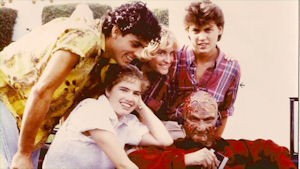 Promotional images for Never Sleep Again: The Elm Street Legacy documentary
Promotional images for Never Sleep Again: The Elm Street Legacy documentary
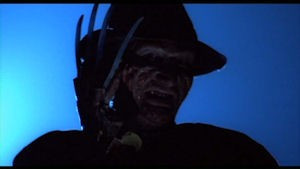 Another promotional image for Never Sleep Again: The Elm Street Legacy documentary
Another promotional image for Never Sleep Again: The Elm Street Legacy documentary
Key Segments and Revelations
The documentary’s strength lies not only in its overall scope but also in the insightful examination of each film. By breaking down the elm street legacy film by film, Never Sleep Again allows for a nuanced understanding of the creative decisions, challenges, and cultural context surrounding each installment.
“Don’t Fall Asleep”: Genesis of a Nightmare
The opening segment, “Don’t Fall Asleep,” dedicates a substantial 40 minutes to the genesis of it all: Wes Craven’s original A Nightmare on Elm Street (1984). It delves into Craven’s inspirations, revealing the societal anxieties of the time, including the McMartin preschool trial, which subtly influenced the portrayal of Freddy Krueger as a child killer. The segment explores the casting process, the iconic design of Freddy’s glove and makeup (famously inspired by pepperoni pizza!), and the innovative special effects that brought the dream world horrors to life. Tensions between Craven and New Line Cinema founder Robert Shaye are also examined, particularly concerning the film’s ending, highlighting the collaborative and sometimes conflicting forces that shaped the initial vision of the elm street legacy.
 Wes Craven on set, discussing the creation of A Nightmare on Elm Street
Wes Craven on set, discussing the creation of A Nightmare on Elm Street
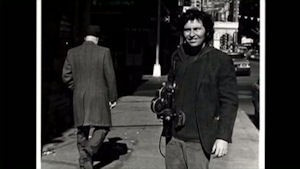 Robert Englund in Freddy Krueger makeup and Heather Langenkamp as Nancy, key figures in the Elm Street legacy
Robert Englund in Freddy Krueger makeup and Heather Langenkamp as Nancy, key figures in the Elm Street legacy
“Kill for Me”: The Controversial Sequel – Freddy’s Revenge
Moving into the sequel, “Kill for Me,” the documentary tackles the often-maligned but undeniably fascinating A Nightmare on Elm Street 2: Freddy’s Revenge (1985). This 27-minute segment doesn’t shy away from the film’s overt homosexual subtext, a theme that was largely unintentional during production but has become a significant point of discussion and cult appreciation in retrospect. Interviews with director Jack Sholder, screenwriter David Chaskin, and lead actor Mark Patton provide conflicting yet compelling perspectives on the film’s queer undertones. This segment is a highlight, showcasing the documentary’s willingness to explore the unexpected and sometimes accidental layers of the elm street legacy.
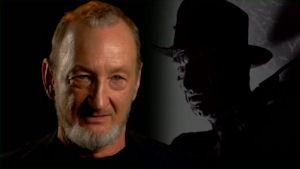 Mark Patton in A Nightmare on Elm Street 2, a film known for its controversial subtext
Mark Patton in A Nightmare on Elm Street 2, a film known for its controversial subtext
 Clu Gulager in A Nightmare on Elm Street 2, a memorable supporting actor in the franchise
Clu Gulager in A Nightmare on Elm Street 2, a memorable supporting actor in the franchise
 Hope Lange in A Nightmare on Elm Street 2, adding to the film's cast of notable actors
Hope Lange in A Nightmare on Elm Street 2, adding to the film's cast of notable actors
“We’re the Dream Warriors”: Dream Warriors and Franchise Evolution
“We’re the Dream Warriors” shifts focus to A Nightmare on Elm Street 3: Dream Warriors (1987), widely considered one of the strongest sequels and a pivotal moment in the elm street legacy. This 33-minute segment examines the film’s more fantasy-driven approach, the introduction of the “Dream Warriors,” and the return of Heather Langenkamp and John Saxon, which provided a vital link back to the original. Production challenges, particularly the directorial style of Chuck Russell and his relationship with the cast, are candidly discussed. The segment also highlights the memorable kill sequences and the film’s contribution to solidifying Freddy’s wisecracking persona, a defining characteristic that would further shape the elm street legacy.
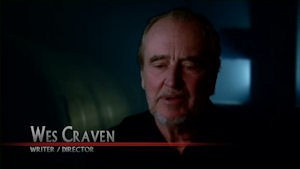 Heather Langenkamp and other Dream Warriors in A Nightmare on Elm Street 3, a fan-favorite installment
Heather Langenkamp and other Dream Warriors in A Nightmare on Elm Street 3, a fan-favorite installment
 Mark Patton in A Nightmare on Elm Street 2, a film known for its controversial subtext
Mark Patton in A Nightmare on Elm Street 2, a film known for its controversial subtext
“How Sweet, Fresh Meat” & “Welcome to Primetime”: Freddy Becomes a Pop Culture Icon
The documentary then moves into the era where Freddy truly transcended horror and entered pop culture mainstream. “How Sweet, Fresh Meat” (29 minutes) covers A Nightmare on Elm Street 4: The Dream Master (1988), exploring director Renny Harlin’s action-oriented approach and the film’s financial success, despite a tumultuous production and script issues. The segment reveals how Dream Master solidified Freddy as a horror “James Bond,” a more colorful and action-packed villain. “Welcome to Primetime” (15 minutes) delves into the short-lived Freddy’s Nightmares TV series, showcasing its boundary-pushing content and its role in further cementing the elm street legacy in the television landscape.
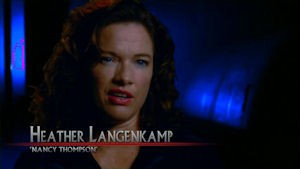 Renny Harlin directing on the set of A Nightmare on Elm Street 4, bringing an action-oriented style to the franchise
Renny Harlin directing on the set of A Nightmare on Elm Street 4, bringing an action-oriented style to the franchise
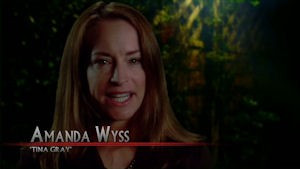 Lisa Wilcox in A Nightmare on Elm Street 4, a key figure in the later sequels
Lisa Wilcox in A Nightmare on Elm Street 4, a key figure in the later sequels
“It’s a Boy!” & “Every Town has an Elm Street”: Franchise Decline and 3D Gimmicks
As the franchise continued, Never Sleep Again doesn’t shy away from addressing the critical and creative downturn. “It’s a Boy!” (23 minutes) examines A Nightmare on Elm Street 5: The Dream Child (1989), highlighting the darker tone but also acknowledging the film’s missteps, including the infamous “baby Freddy” and convoluted plot. “Every Town has an Elm Street” (17 minutes) covers Freddy’s Dead: The Final Nightmare (1991), dissecting its cartoonish approach, 3D gimmick, and overall critical failure. These segments offer a frank look at the challenges of maintaining quality and relevance as the elm street legacy stretched into the early 90s.
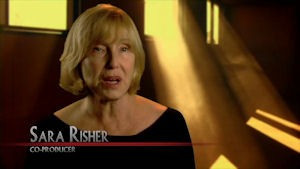 Baby Freddy in A Nightmare on Elm Street 5, a controversial element in the franchise's later installments
Baby Freddy in A Nightmare on Elm Street 5, a controversial element in the franchise's later installments
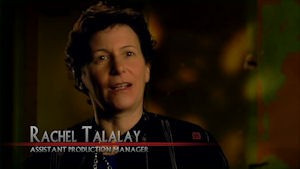 Freddy's Dead: The Final Nightmare poster, representing the 3D gimmick of the final original series film
Freddy's Dead: The Final Nightmare poster, representing the 3D gimmick of the final original series film
“Meet Your Maker”: Craven Returns with New Nightmare
A significant turning point in the elm street legacy is explored in “Meet Your Maker” (24 minutes), focusing on Wes Craven’s return with Wes Craven’s New Nightmare (1994). This segment highlights the film’s meta-narrative, blurring the lines between fiction and reality, and Heather Langenkamp’s central role playing herself. Craven’s intentions to reinvent the series and explore deeper themes are discussed, along with the film’s initial box office disappointment despite its critical re-evaluation as a sophisticated and genuinely scary entry in the elm street legacy.
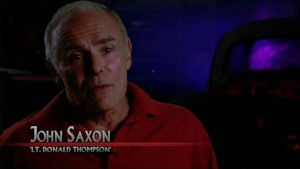 Heather Langenkamp in Wes Craven's New Nightmare, a meta-sequel that redefined the franchise
Heather Langenkamp in Wes Craven's New Nightmare, a meta-sequel that redefined the franchise
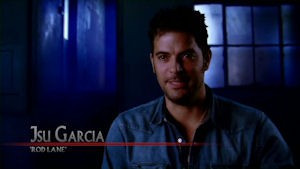 Wes Craven and Heather Langenkamp on the set of New Nightmare, revisiting the original concept
Wes Craven and Heather Langenkamp on the set of New Nightmare, revisiting the original concept
“Place Your Bets”: The Crossover Event – Freddy vs. Jason
Finally, “Place Your Bets” (22 minutes) culminates with the long-awaited crossover, Freddy vs. Jason (2003). The segment details the film’s protracted development process, director Ronny Yu’s approach to blending the two horror icons, and the challenges of satisfying fans of both Nightmare on Elm Street and Friday the 13th franchises. While Craven’s mixed feelings about the film are noted, the documentary ultimately acknowledges Freddy vs. Jason as a fun, comic book-esque spectacle that added another chapter to the elm street legacy, even if it strayed from the series’ horror roots.
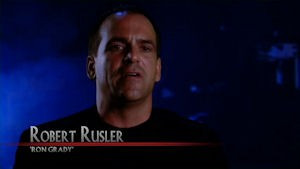 Freddy Krueger and Jason Voorhees facing off in Freddy vs. Jason, the crossover event
Freddy Krueger and Jason Voorhees facing off in Freddy vs. Jason, the crossover event
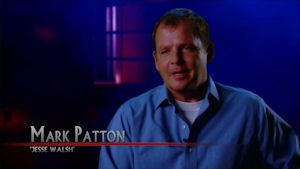 Monica Keena in Freddy vs. Jason, part of the cast that brought the crossover to life
Monica Keena in Freddy vs. Jason, part of the cast that brought the crossover to life
Why ‘Never Sleep Again’ is Essential for Horror Fans
Never Sleep Again: The Elm Street Legacy transcends the typical “making-of” documentary. It’s a comprehensive historical document, a critical analysis, and a loving tribute to the elm street legacy. Its exhaustive scope ensures that every facet of the franchise is explored, from the creative sparks of the original film to the challenges and triumphs of the sequels, the television series, and the eventual crossover.
The engaging storytelling, driven by a wealth of insightful interviews, keeps viewers hooked throughout its considerable runtime. Hearing directly from Wes Craven, Robert Englund, Heather Langenkamp, and countless other key players provides an unparalleled understanding of the creative process, the on-set dynamics, and the evolving cultural impact of the franchise. The documentary’s willingness to tackle controversies head-on adds depth and credibility, making it more than just a celebratory piece.
For hardcore fans, Never Sleep Again is a treasure trove of behind-the-scenes information and nostalgic reflection. For more casual viewers, or even those new to the franchise, it serves as an engaging and informative entry point into the rich history of the elm street legacy. It’s a testament to the enduring power of horror cinema and the indelible mark that A Nightmare on Elm Street has left on popular culture.
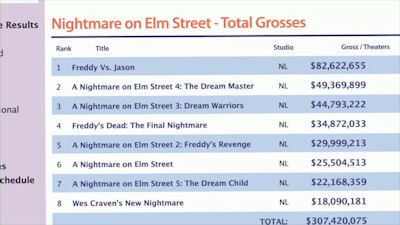 Robert Englund reflecting on the Elm Street legacy, a central figure in the documentary
Robert Englund reflecting on the Elm Street legacy, a central figure in the documentary
Conclusion
Never Sleep Again: The Elm Street Legacy is more than just a documentary; it’s a definitive archive of one of horror’s most iconic franchises. It meticulously pieces together the complex tapestry of the elm street legacy, revealing the creative genius, the lucky accidents, and the occasional missteps that contributed to its enduring appeal. Whether you’re a lifelong fan or a newcomer curious about the nightmare that started it all, this documentary is essential viewing. It’s a powerful reminder of the impact of A Nightmare on Elm Street and its lasting place in cinematic history. Dive into Never Sleep Again and truly understand the elm street legacy – if you dare to stay awake.

